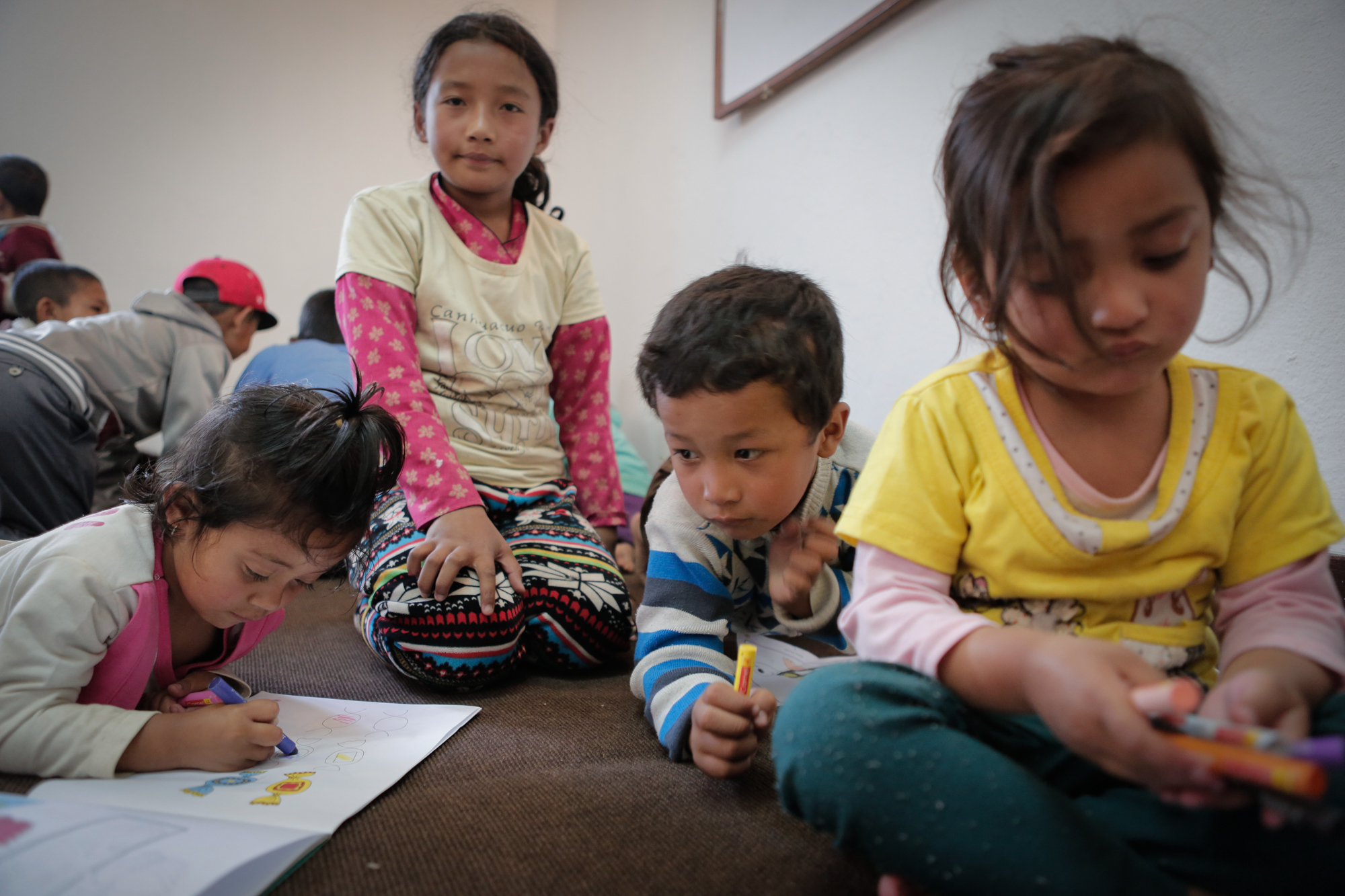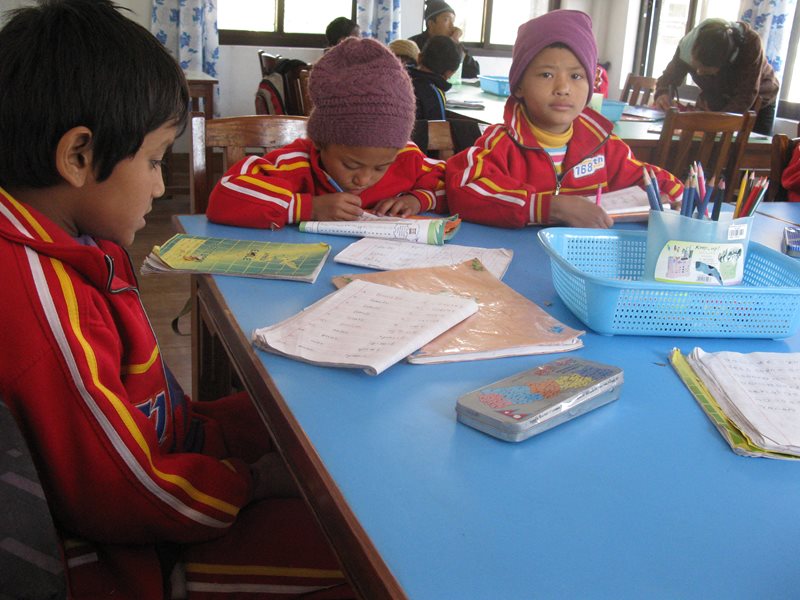
Vi er i Nepal
A diverse nation in the heart of the Himalayas
-74487.jpg?width=800)
The Federal Democratic Republic of Nepal is located in the Himalayas in South Asia. Nepal has a population of around 31 million (July 2014 est.); the largest city is the capital Kathmandu, which is home to 990,000.
In spite of suffering rapid political changes in the past decades, Nepal has retained its diverse culture; though it was officially declared a secular state in 2006, there is a strong influence from both Hinduism and Buddhism.
In April 2015 a powerful earthquake, 7.8 on the Richter Scale, struck the Kathmandu Valley and caused devastation. Nearly 9,000 people were killed, and many more injured. The situation was made even worse by a second earthquake in May, as well as by the monsoon season which caused over 5,600 landslides, making even more people homeless and causing problems for the delivery of aid. In addition, there was political tension and unrest over the drafting of a new constitution which also made it harder for families to rebuild their lives. In particular, the blockade at the border with India led to shortages in essentials such as medicines and fuel.
One of the least developed countries in the world
Agriculture is the mainstay of the economy, providing a livelihood for approximately three quarters of the population. Tourism is an increasingly important source of income and employment. However, since the earthquake and political unrest in 2015, the numbers of people visiting the country has fallen.
In 2014 about eight million Nepalese lived below the poverty line. After the earthquake, nearly one million additional people were pushed into poverty. Around 300,400 people (six percent of the population, est 2011) live and work abroad, and send back money to their families in Nepal. The number of migrant workers has risen since the earthquake.
Poverty and the lack of access to health care result in thousands of people dying each year due to malnutrition and communicable diseases. HIV/AIDS is an increasing concern – poverty, illiteracy, gender inequality and the low educational level compound the epidemic's effects
A rising number of children are in need of protection

TThere are around 11.6 million children under the age of 18 in Nepal (2012 est). The number of children without parental care, or at risk of losing such care, is increasing. There are various reasons for this rise including the recovery from the recent earthquake and landslides, the political unrest, the high rate of poverty and the spread of HIV/AIDS.
According to a UNICEF study, the most vulnerable children in Nepal include those with disabilities, those living in violent and abusive families, street children and those involved in child labour. It is estimated that around 34 per cent of children between the ages of five and 14 are forced to work.
Children are even more unprotected after the earthquake. Many have lost parental care and are struggling to survive alone. In addition, according to reports, children especially girls, are more at risk from human traffickers who take advantages of the despair and chaos to force children into unpaid labour, including commercial sexual exploitation.
SOS Children's Villages in Nepal
Strengthen families: We work with struggling local families so that they can stay together and the children can grow up in a caring environment.
Care in SOS families: When children can no longer stay with their families, they are cared for by their SOS mothers in one of the nine SOS Children's Villages throughout the country.
Education: Young children can attend the SOS kindergartens, and older children can attend the primary and secondary school which we run in Nepal.
Support for young people: In eight locations young adults live in special accommodation where they are guided on their path to an independent life with the help of professionals.
Medical care: We also provide vital medical advice and treatment in a country where health care is not widely available.
Emergency programme after the April 2015 earthquake:
- Immediate aid: we delivered first aid, food, clothing, water and emergency shelter to vulnerable children and families. We also worked hard to reunite families.
- Child-friendly spaces: We created child-friendly spaces where children can play and receive psychological support from our trained and experienced staff.
- Longer-term assistance: Our work has adapted to meet the changing needs. For example we have distributed school materials and winter clothes, helped people rebuild their homes, and are reconstructing schools which were damaged during the earthquake.
Website of SOS Children's Villages Nepal
(available in English)
